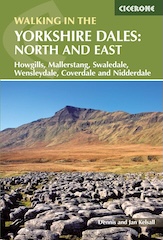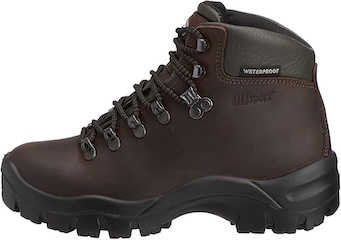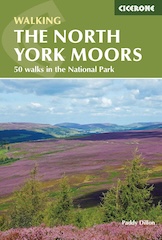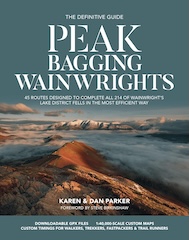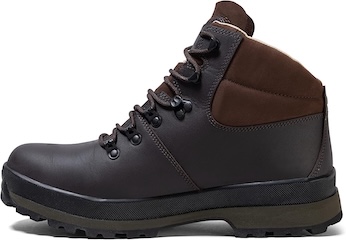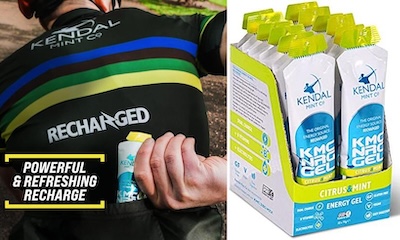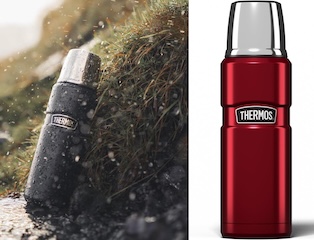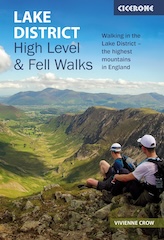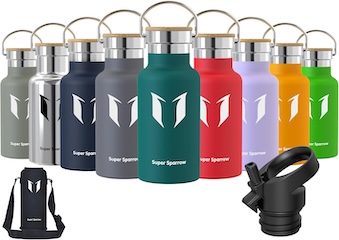Follow Woodland Trails and Quiet Lanes on the Appleton-le-Moors Walk
Begin your Appleton-le-Moors walk in the picturesque village of Sinnington. You’ll find space to park a few cars beside Sinnington Village Hall, right in front of the traditional village maypole. From the car park, set off north along the tarmac lane directly in front of the village hall.
Walk past Holme House on your right and Lilac Cottage on your left, then continue by a row of attractive stone cottages, including Victoria Gardens. After passing 1 Church Row, turn right onto Church Lane, following signs for The Hall and The Church. The lane climbs gently uphill and bends left in front of the church. Keep to the lane as it quickly curves right, then left again at a junction marked as a public bridleway.
Continue past a large stone farmhouse on your right to emerge into open countryside. Head north, walking past Stables Wood until you reach a T-junction. Turn right here, following the signposted bridleway. The route bends left and narrows into a woodland path. Stay on this trail for roughly a mile, ignoring all paths that descend to the left. This section is known as Wiley Flat Lane and skirts the eastern edge of the woodland. You’ll spot occasional blue bridleway waymarkers to guide you.
Eventually, the trees give way to open fields near Mill Wood. A short distance ahead you’ll reach a crossroads. Go straight on through the gate, ignoring the bridleways to your left and sharply right. You’re now on Bull Ing Lane. Continue along this clear trail, passing a farmhouse on your left at Kirby Balk, then follow the stone track into the village of Cropton.

When you reach the main road, turn left and walk into the village, passing the New Inn on your left. At Cropton village green, follow the road round to the right, signposted to Sutherland and Newton. The road bends left and becomes High Street, a wide lane that leads north through the length of the village. At the far end, turn left onto Church Lane, a narrow tarmac track just after the village well.
Follow Church Lane downhill to reach St Gregory’s Church. In front of the church, turn left onto the wide grassy path beside the dry stone wall. This leads you to the main road. Turn right and walk briefly downhill. As the road curves to the right, turn left in front of a wrought-iron memorial bench dedicated to Jim Flintoft.
You’re now on Low Lane, a public bridleway which also forms part of the Tabular Hills Walk. Head south along the bridleway, ignoring the right-hand track down to Cropton Mill. Keep to the grassy path ahead, which continues as a woodland trail for over half a mile. At this point, you’re roughly halfway around your Appleton-le-Moors walk.
The bridleway soon emerges into open countryside and splits. Take the right-hand fork, signposted to Appleton-le-Moors and still part of the Tabular Hills Walk. Follow the path along the right-hand edge of the field, then use the arched wooden footbridge to cross the River Seven. On the far side, continue to a small gate and go through it to reach a tarmac lane.

This lane is marked as a North York Moors public footpath and remains part of the Tabular Hills Walk. Take care not to turn left towards Appleton Mill Farm. Instead, follow the lane steadily uphill for over half a mile until you reach a slightly wider road called Hamley Lane. Continue straight ahead for a further quarter of a mile to meet the main road at the northern end of Appleton-le-Moors.
Turn left here, following the signs for Kirbymoorside and Pickering. Walk through the village, enjoying the characterful stone cottages, until you reach the southern end. As the road bends right, continue straight on along the public bridleway, passing to the left of Manor Farmhouse.
Follow this bridleway south, heading gently downhill for half a mile beside a sequence of large open fields. When the bridleway forks, take the right-hand path through the gate and continue into Bishop Hagg Wood. Enjoy the peaceful woodland trail as it leads you through the trees.
Emerge from the woods and keep to the main track, known as The Stripe, with the River Seven down to your left. Eventually, the track bends right and re-enters the woodland, bringing the river right alongside you. Follow this lovely riverside path for just over a third of a mile to return to Sinnington.
At the road, turn left to cross the bridge, then left again to make your way across the village green. Continue back to the village hall, where your Appleton-le-Moors walk began.
Appleton-le-Moors Walk: Maps and Tools
Visit either the OS Maps website or the Outdooractive website to view this walking route in greater detail. Both platforms offer a range of features, including the ability to print the route, download it to your device, and export the route as a GPX file. You can also watch a 3D fly-over and share the route on social media. Additionally, this page includes a printable version of the walk in PDF format. Plus there is a supporting video, available for you to watch on YouTube.
Appleton-le-Moors Walk: Distance, Duration, Statistics
Distance: 7 miles
Distance: 11 kilometres
Duration: 3¼ hours
Ascent: 795 feet
Ascent: 242 metres
Type: Circular walk

Walking in the Yorkshire Dales with 43 Circular Routes
AD This Cicerone guidebook includes 43 circular walks exploring valleys, hills, and moors between Kirkby Stephen and Pateley Bridge. With OS maps, local highlights, and routes ranging from 3–11 miles, it is a year-round companion for walkers of all abilities.
Recommended Ordnance Survey Map
The best map to use on this walk is the Ordnance Survey map of the North York Moors Eastern Area, reference OS Explorer OL27, scale 1:25,000. It clearly displays footpaths, rights of way, open access land and vegetation on the ground, making it ideal for walking, running and hiking. The map can be purchased from Amazon in either a standard, paper version or a weatherproof, laminated version, as shown below.
About Appleton-le-Moors
Appleton-le-Moors is a village and civil parish in North Yorkshire, situated within the North York Moors National Park. It lies close to both Pickering and Kirkbymoorside. According to the 2001 census, the village had a population of 183, which had declined to 164 by the time of the 2011 census.
Historically part of the North Riding of Yorkshire, Appleton-le-Moors was included in the Ryedale district from 1974 until 2023. It is now administered by the unitary authority of North Yorkshire Council.
The village appears in the Domesday Book and still retains its traditional mediaeval layout. It is also a classic example of a 12th-century planned village, where each house originally had a long garden or garth stretching 330 feet back to the rear lane. The layout remains clearly visible today.
Appleton-le-Moors is of particular archaeological interest. Finds made in and around the village include flint tools, Roman coins, and a mediaeval oven, pointing to a long history of human activity in the area.
One of the village’s most striking landmarks is Christ Church, a remarkably fine 19th-century building often described as “the little gem of moorland churches”. The church, which is Grade I listed, was designed by the architect J. L. Pearson in the French Gothic style. It features intricate decoration, a tower topped with a spire, and a beautiful west-facing rose window. The ten-part design resembles the White Rose of York and includes stained-glass panels depicting Christian virtues such as Faith, Hope, and Charity.
Visit my website page at https://www.paulbeal.com/hutton-le-hole-walk to read more about the church.
Christ Church and the village hall, which was formerly a school, were both funded by Mary Shepherd, the widow of Joseph Shepherd (1804–1862). Joseph was born in Appleton-le-Moors, went to sea, and became a successful shipowner and a very wealthy man. He and Mary are buried in the churchyard at Lastingham.
Joseph built a house in the village, directly opposite where the church now stands. In the 1980s and 1990s, the house was converted into a country hotel, but it has since returned to private ownership. For a brief period in the 1840s, Joseph employed a teacher to educate local children. This arrangement ended in 1843 when his sister, Ann Shepherd, who had married her cousin Robert Shepherd, emigrated to South Australia with their twelve children.
Appleton-le-Moors Walk: My Photos
I begin my Appleton-le-Moors walk in the charming village of Sinnington, just off the A170 between Kirkbymoorside and Pickering. A small car park sits beside the village hall, directly in front of the maypole. Sinnington appears in the Domesday Book of 1086 as Sevenictun or Siuenintun. At that time, it was an Anglo-Saxon settlement held by a Norman baron. His successors granted lands to religious institutions. The village has always depended on agriculture, and its population has remained around 300 for centuries. Between 1534 and 1543, Catherine Parr, later Queen of England, lived here as Lady Latimer, the second wife of John Neville, 3rd Baron Latimer. Her brother William Parr held the manor at nearby Nunnington.

Grisport Unisex Adult Peaklander Hiking Boots
AD The Grisport Unisex Adult Peaklander Hiking Boots are crafted in Italy with a durable waxed leather upper, Spotex breathable lining, and a reliable Track-on rubber sole. Waterproof and weighing just 1120g, they offer comfort, resilience, and dependable performance on demanding trails.
The village green is beautifully maintained and features a small arched bridge known locally as ‘The Small Bridge’. A nearby sign dates it to at least 1616. Its original purpose is uncertain, but it likely formed part of a mediaeval track to Pickering, offering a dry crossing over the marshy riverside.

The Sinnington Village Maypole stands proudly in front of the car park. There has been a maypole here for more than 400 years. Each May Day, children from the village school dance around it to celebrate spring’s arrival. The previous pole, made from larch, reached 85 feet in height. The current one, built from galvanised steel and erected in 1992, stands at 45 feet. A gilded fox weather vane tops the pole, donated by the historic Sinnington Hunt. Villagers take pride in the maypole, which continues to symbolise community spirit. In April 2012, it underwent full refurbishment, funded by the North York Moors LEADER Small Scale Enhancements Scheme.

Grisport Unisex Adult Peaklander Hiking Boots
AD The Grisport Unisex Adult Peaklander Hiking Boots are crafted in Italy with a durable waxed leather upper, Spotex breathable lining, and a reliable Track-on rubber sole. Waterproof and weighing just 1120g, they offer comfort, resilience, and dependable performance on demanding trails.
I pause by the village hall to read a nearby sign explaining its history. Built in 1863, the hall replaced the village’s first school, founded in 1741 using funds from Lady Elizabeth Lumley’s estate. She died in 1657. The building became redundant in 1971 when a new school opened at Friars Hill on the village’s western edge. Over the next ten years, residents raised the money to buy it from the county council and convert it into a community space. The hall opened in 1982 and has since seen further improvements, most recently in 2018.

From the hall, I continue my Appleton-le-Moors walk. I follow the lane heading north out of the village, passing Holme House on my right and Lilac Cottage on my left. A short distance further on, I pass a row of traditional terraced cottages, also on the right.

Fifty Walks Across the Beautiful North York Moors National Park
AD Discover 50 routes across the North York Moors, from short easy strolls to challenging high-level hikes. With OS maps, route descriptions, and local highlights, it also includes the legendary 40-mile Lyke Wake Walk, described in four accessible stages.
The Parish Church of All Saints, Sinnington
The lane leads to Church Lane, where I soon reach the Parish Church of All Saints, tucked into the village’s north-eastern corner. The building is currently undergoing repairs. Built or rebuilt in the 12th century, the church was gifted to the Nunnery of Little Marishes by Ralph de Clere, then resident of the neighbouring Hall. Although no evidence remains, it’s possible a Saxon chapel stood here before the Norman structure, serving the Hall.

The shape of the building has changed very little in over 800 years. It still features architectural details typical of late Saxon or early Norman churches. Modest changes were made in the 17th century, likely influenced by the Reformation. A major restoration in 1904, directed by C. H. Fowler of Durham, left the church much as it stands today. The work, costing £1400, removed the musicians’ gallery above the blocked west door, added a new east window, and installed a wide chancel arch. The restoration reused original materials, including the north respond.

Fifty Walks Across the Beautiful North York Moors National Park
AD Discover 50 routes across the North York Moors, from short easy strolls to challenging high-level hikes. With OS maps, route descriptions, and local highlights, it also includes the legendary 40-mile Lyke Wake Walk, described in four accessible stages.
During this same project, craftsmen modified the old Tudor and Jacobean box pews to make them “comfortable rather than penitential.” The font, pulpit, lectern, organ, and chancel furnishings all date from this period. A parishioner carved the lectern from wood salvaged during the restoration. One unusual surviving item is a bassoon, once used to accompany the choir before the organ was installed. The former gallery also housed a barrel-organ that played one of twelve tunes when cranked by hand.

Parish registers, held at Northallerton, date back to 1577 and were written in Latin until 1653. The first recorded vicar, Thomas Mennel, died in 1618. Notably, the agricultural writer William Marshall was baptised here in 1735. He died in 1818, before completing a College of Agriculture at Beck Hall in Pickering. His final resting place is in Middleton.

Osprey Hikelite Unisex Backpack for Comfortable and Lightweight Hiking
AD The Osprey Hikelite backpack combines lightweight design with practical features, including a breathable mesh back panel, soft webbing straps, and stretch mesh water bottle pockets. With zipped storage and an organiser compartment, it is ideal for day hikes and outdoor use.
At the top of Church Lane, I pass a handsome two-storey cottage built from pale limestone. Its sash windows and simple form reflect traditional Yorkshire craftsmanship. Beyond this, I leave the village behind and emerge into open countryside.

A scenic bridleway called Wiley Flat Lane leads me north through woodland. This inviting path skirts the eastern edge of Hob Bank Wood and Cropton Banks Wood. The lush trees and secluded feel make this stretch a standout section of my Appleton-le-Moors walk.

Osprey Hikelite Unisex Backpack for Comfortable and Lightweight Hiking
AD The Osprey Hikelite backpack combines lightweight design with practical features, including a breathable mesh back panel, soft webbing straps, and stretch mesh water bottle pockets. With zipped storage and an organiser compartment, it is ideal for day hikes and outdoor use.
The trail through Cropton Banks Wood is peaceful and easy to follow. Mature oak and ash trees tower overhead, their branches forming a natural canopy. Brambles, ivy, and low-growing shrubs carpet the woodland floor, creating a rich and textured undergrowth.

Further along Wiley Flat Lane, I come across a fallen tree lying across the path. Someone has neatly sawn the thick trunk into sections, allowing walkers to pass through without difficulty.

Peak Bagging Wainwrights with Routes to Complete All Fells
AD This comprehensive guide offers 45 circular routes linking all 214 Wainwright fells. With maps, GPX downloads, elevation profiles, and practical advice, it provides efficient yet inspiring ways to complete this classic Lake District challenge at your own pace.
I soon emerge from the woodland into open countryside. A wide view opens up to the north-west, revealing fields and hedgerows below. In the far distance, the dark bulk of Spaunton Moor rises beyond the farmland.

Still heading north, I follow Bull Ing Lane. At Kirby Balk, I pass a fine stone-built farmhouse with traditional North Yorkshire character. Its irregular limestone walls, small-paned sash windows, and pitched roof of terracotta tiles give it a timeless quality. A dry-stone wall with a rustic wooden gate encloses the garden, where bright flowers bloom in a black trough planter set against the stonework.

Peak Bagging Wainwrights with Routes to Complete All Fells
AD This comprehensive guide offers 45 circular routes linking all 214 Wainwright fells. With maps, GPX downloads, elevation profiles, and practical advice, it provides efficient yet inspiring ways to complete this classic Lake District challenge at your own pace.
The road leads me into Cropton. I pass the New Inn, a relaxed, family-run pub offering good food, drink, and accommodation. It’s also the home of Cropton Brewery. This award-winning brewery has produced real ales for more than 25 years, continuing a local brewing tradition that dates back to 1613. Popular beers include Monkmans Slaughter and Blackout. In recent years, the brewery has expanded its operations while retaining its small-village charm.

I walk past the former Cropton Day School. Time has not been kind to the building, which now shows signs of disrepair. I can just about make out the date 1864 carved into the stonework. The modest Gothic-style structure features a large pointed-arch window with three narrow lancets beneath a circular opening. All are framed in dressed stone. A simple bellcote with a worn stone cross tops the gable end, recalling its Victorian-era educational and perhaps ecclesiastical purpose.

Berghaus Hillmaster II GTX Men's High Rise Hiking Boots
AD The Berghaus Hillmaster II GTX men’s hiking boots feature a waterproof, breathable GORE-TEX membrane, a memory foam tongue and collar for a personalised fit, and a Vibram sole delivering exceptional grip, stability, and shock protection for confident performance on any terrain.
I continue along High Street, which runs through the heart of Cropton. This quiet road, lined with cottages and greenery, provides a relaxing pause in the journey and makes for a pleasant part of my Appleton-le-Moors walk.

St Gregory’s Church, Cropton
Leaving High Street, I follow Church Lane downhill to reach St Gregory’s Church. This striking building is a fine example of Norman Revival architecture. It occupies a site steeped in religious history and has been grade II listed since 1953. The current structure stands on the foundations of a mediaeval church destroyed by fire around 1840.

Berghaus Hillmaster II GTX Men's High Rise Hiking Boots
AD The Berghaus Hillmaster II GTX men’s hiking boots feature a waterproof, breathable GORE-TEX membrane, a memory foam tongue and collar for a personalised fit, and a Vibram sole delivering exceptional grip, stability, and shock protection for confident performance on any terrain.
Historical records show that a church existed here in the 14th century, served by a chaplain who may have been linked to nearby Cropton Castle. For many years, St Gregory’s was a chapel of ease to St Andrew’s Church in Middleton. In 1986, it became part of the new parish of Cropton with Cawthorne, within the United Benefice of Lastingham. This now includes the parishes of Appleton-le-Moors, Rosedale, and Hutton-le-Hole.

After the fire, rebuilding took place between 1844 and 1855 under architects J. B. and W. Atkinson. They constructed the new church from squared limestone on a tooled plinth, with dressings to match and a slate roof. Some original materials were reused, while others were sold. The design features a five-bay nave and an apsidal chancel, unified into a single continuous space. A south-facing porch and north vestry complete the layout. On the west gable sits a finely carved bellcote, with two round-arched openings, moulded surrounds, a central shaft topped by a scalloped capital, and a coved hood mould. A chevron-edged oculus in the gable apex frames a recessed quatrefoil. The rounded Romanesque windows are signature elements of the Norman Revival style.

Kendal Mint Co Energy Gel with Citrus and Mint Flavour
AD Kendal Mint Co energy gels deliver 27g of fast-absorbing carbohydrates plus electrolytes and B vitamins for improved performance. Vegan, gluten free, and Informed Sport certified, these caffeine-free gels are refreshing, easy to digest, and ideal for running, cycling, and endurance.
Inside, the most historically significant furnishing is the 12th-century font. Its plain circular bowl rests on a pedestal decorated with nailhead moulding. Other notable features include a finely carved stone wall tablet commemorating Captain George Lee, who died in 1794. The lettering, picked out in black, is accompanied by carved reliefs, adding to the church’s quiet dignity.

The name ‘Cropton’ comes from Anglo-Saxon roots and means ‘hilltop settlement’. Appropriately, St Gregory’s Church stands just east of Castle Hill, the site of a former Norman motte-and-bailey castle. Today, the church remains a peaceful and historically rich landmark. It’s another highlight of my Appleton-le-Moors walk. After exploring the churchyard, I follow a wide grassy path beside a dry-stone wall that leads gently downhill to the main road.

Kendal Mint Co Energy Gel with Citrus and Mint Flavour
AD Kendal Mint Co energy gels deliver 27g of fast-absorbing carbohydrates plus electrolytes and B vitamins for improved performance. Vegan, gluten free, and Informed Sport certified, these caffeine-free gels are refreshing, easy to digest, and ideal for running, cycling, and endurance.
After a short stretch along the main road out of Cropton, I turn left onto a bridleway. Near the junction stands a black wrought-iron memorial bench, surrounded by a patch of green ferns. The inscription across the top rail reads:
1939–45 JIM FLINTOFT 15 MAY 1941
It’s a simple yet powerful tribute. The date suggests that Jim Flintoft lost his life during the Second World War, most likely on that day.

The bridleway, known as Low Lane, leads me through peaceful woodland and out into open countryside. I continue along the path until I reach a wooden footbridge spanning the River Seven. From here, I press on towards the village of Appleton-le-Moors.

Climbing out of the valley is a bit of a slog, but I eventually reach the road and enter Appleton-le-Moors. I had planned to visit Christ Church, but a wedding is underway, so I give it a miss. No matter—I’ve visited before and written about it here:
https://www.paulbeal.com/hutton-le-hole-walk

I continue along the main road, passing through the village. At the southern end, where the road curves right, I keep straight on. A public bridleway leads off by the left-hand side of the elegant Manor Farmhouse.

The bridleway descends gently in a southerly direction through open farmland. It’s a lovely section of my Appleton-le-Moors walk, with far-reaching views of Sinnington below and the Vale of Pickering beyond.

At the bottom of the slope, the bridleway forks. I take the right-hand path through a gate, which leads me into Bishop Hagg Wood.

Lake District High Level and Fell Walks with Thirty Routes
AD This pocket-sized guide presents 30 routes on the Lake District’s highest fells, including Scafell Pike, Helvellyn, and Blencathra. With OS maps, colour photographs, and practical notes, it offers circular walks from 4–15 miles graded by difficulty.
My route now follows a bridleway that loops around the southern and western edges of the River Seven. Marked on the map as The Stripe, this peaceful stretch offers another quiet and scenic moment in my Appleton-le-Moors walk.

I follow the trail alongside the riverbank, walking right beside the water as it winds back towards Sinnington.

Lake District High Level and Fell Walks with Thirty Routes
AD This pocket-sized guide presents 30 routes on the Lake District’s highest fells, including Scafell Pike, Helvellyn, and Blencathra. With OS maps, colour photographs, and practical notes, it offers circular walks from 4–15 miles graded by difficulty.
Back in the centre of the village, I cross the River Seven using the stone bridge. Built in 1769, it replaced an earlier wooden crossing.

I return to the village green, where my Appleton-le-Moors walk began. The maypole still stands tall, and the surrounding cottages look as welcoming as ever. It’s been a rewarding and memorable route.

